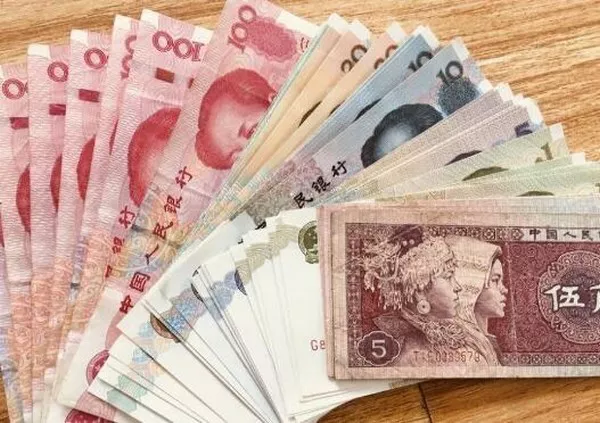China, with its rich history and rapidly growing economy, has a unique financial system that includes a variety of currency denominations. For those unfamiliar with Chinese currency, the question often arises: What is Chinese money called? In this article, we will explore the various names and denominations of Chinese currency, providing insights into its fascinating history and the current state of its monetary system.
The Renminbi: China’s Official Currency
The official currency of China is the Renminbi, often abbreviated as RMB and represented by the symbol ¥. The term “Renminbi” translates to “People’s Currency” in English, highlighting its significance in the daily lives of the Chinese people. When asking, “What is Chinese money called?” the most straightforward answer is undoubtedly the Renminbi.
Yuan: The Primary Unit
The Renminbi is further divided into units, with the primary one being the “yuan.” Yuan, represented by the symbol ¥ or 元, serves as the base unit for all monetary transactions in China. To understand Chinese currency denominations, it is essential to grasp that one yuan is equivalent to ten jiao or one hundred fen.
Jiao and Fen: Subunits of Renminbi
Jiao and fen are subunits of the Renminbi, similar to cents and pennies in the U.S. dollar system. One yuan is equivalent to ten jiao, and one jiao is further divided into ten fen. Although fen are still used in some contexts, they are becoming increasingly rare in everyday transactions. Therefore, when inquiring about Chinese money, the focus is primarily on yuan and jiao.
Banknotes: The Backbone of Chinese Currency
Chinese currency primarily exists in the form of banknotes, with a wide range of denominations. Banknotes come in several colors and designs, making them not only a medium of exchange but also a reflection of China’s rich culture and history. Banknotes are issued by the People’s Bank of China and are an integral part of the Renminbi.
Common Banknote Denominations
When considering what Chinese money is called, it is essential to know the common denominations of Renminbi banknotes. The most frequently used notes include the ¥1, ¥5, ¥10, ¥20, ¥50, and ¥100 denominations. These banknotes are readily available and widely accepted in daily transactions throughout China. The design and security features of these notes have evolved over time to prevent counterfeiting.
Coins: Less Common but Still in Circulation
In addition to banknotes, China also issues coins, although they are less commonly used compared to paper currency. Coins are available in various denominations, including the 1 fen, 5 fen, and 1 yuan coins. While they are still in circulation, especially in small transactions, they are gradually being replaced by digital payment methods and banknotes for convenience.
Historical Perspective: The Evolution of Chinese Currency
To understand what Chinese money is called today, it is essential to explore its historical evolution. China has a rich history of currency dating back thousands of years. The concept of money in China has seen various forms, from shells and metal objects to paper notes.
The First Paper Money
China is credited with inventing paper money during the Tang Dynasty in the 7th century. These early forms of paper money were known as “jiaozi” and were initially used primarily for convenience in trade. Over time, the use of paper money became more widespread, leading to the development of sophisticated banking systems.
Yuan Dynasty: The Origin of the Yuan
The Yuan Dynasty, established by Kublai Khan in the 13th century, played a pivotal role in the development of Chinese currency. The name “yuan” was first used during this period as the official name of the currency, and it has remained in use to this day.
Modernization of Chinese Currency
The 20th century witnessed significant changes in Chinese currency. The Republic of China introduced a new currency known as the “yuan” in the early 20th century, which eventually became the Renminbi we know today. The People’s Republic of China, founded in 1949, further consolidated the use of the Renminbi as the country’s official currency.
Digital Currency and the Future of Chinese Money
In recent years, China has made substantial strides in digital currency innovation. The People’s Bank of China has been developing a digital currency known as the Digital Currency Electronic Payment (DCEP) or Digital Yuan. This digital currency aims to provide a more secure and efficient means of conducting transactions, both domestically and internationally. While it is not yet widely adopted, its development signals a potential shift in the way Chinese money is used in the future.
Conclusion: A Currency with a Rich History
In summary, when pondering the question, “What is Chinese money called?” the answer is the Renminbi, with its primary unit being the yuan. Understanding the subunits, denominations, and historical evolution of Chinese currency provides valuable insights into China’s financial system. As China continues to modernize its currency and embrace digital innovations, the future of Chinese money is likely to undergo further transformation, reflecting the country’s position as a global economic powerhouse.
Related Topics:
Understanding the Renminbi Exchange Rate: A Comprehensive Guide
Yuan Fall: Why is China’s Currency Getting Weaker?
The Value of 1 Yuan: Understanding China’s Currency


